- curaprox.com - how to choose a toothbrush
- propdental.es/en - Why is a toothbrush important
- cdc.gov - Use & Handling of Toothbrushes
- nhs.uk - Lifestyle tips for healthy teeth
How to choose the right toothbrush and why is the right choice important?
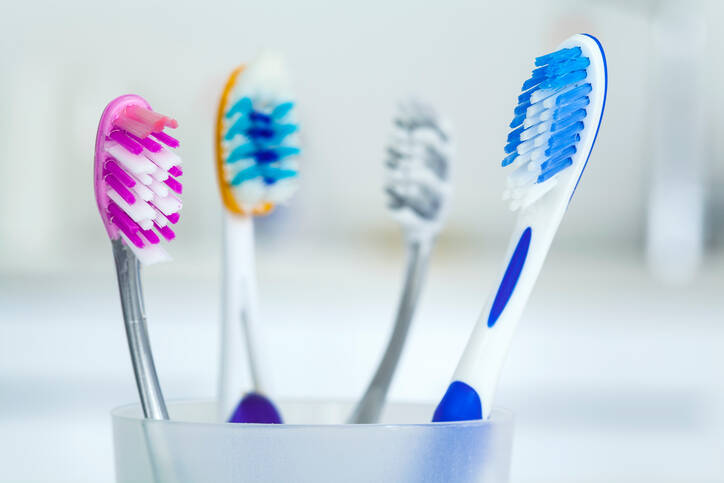
Oral (dental) hygiene, regular and proper brushing, healthy teeth and, for many, a beautiful smile. These words bring together one theme. The toothbrush also falls into this category. It plays an important role in dental health. It can help, but it can also harm.
Article content
This is the cause of bacterial growth and thus tooth decay.
The toothbrush is a tool that ensures the mechanical removal of dirt from the surface of the teeth. Dirt is also referred to as plaque, which is the main cause of tooth decay and tartar.
Tip: The Healthy Teeth magazine article provides more information.
Of course, careful selection of the right mechanical cleaning tool is also important. Toothbrushes, as we all know them, are the most widely used toothbrushing aid.
There are conventional toothbrushes, electric toothbrushes, but also interdental brushes and other oral hygiene aids.
How to choose the best toothbrush?
Of course, a person is guided by several factors when choosing the best toothbrush. For example, the type of toothbrush is decisive in the selection process. That is, whether a conventional toothbrush or an electric toothbrush suits him.
The price can also be decisive. However, not always the most expensive toothbrush is also the best.
Some people prefer a favourite brand and manufacturer. Colour can also influence our choice. Some features of a toothbrush are not decisive when evaluating its quality. But then there are also those that you should follow.
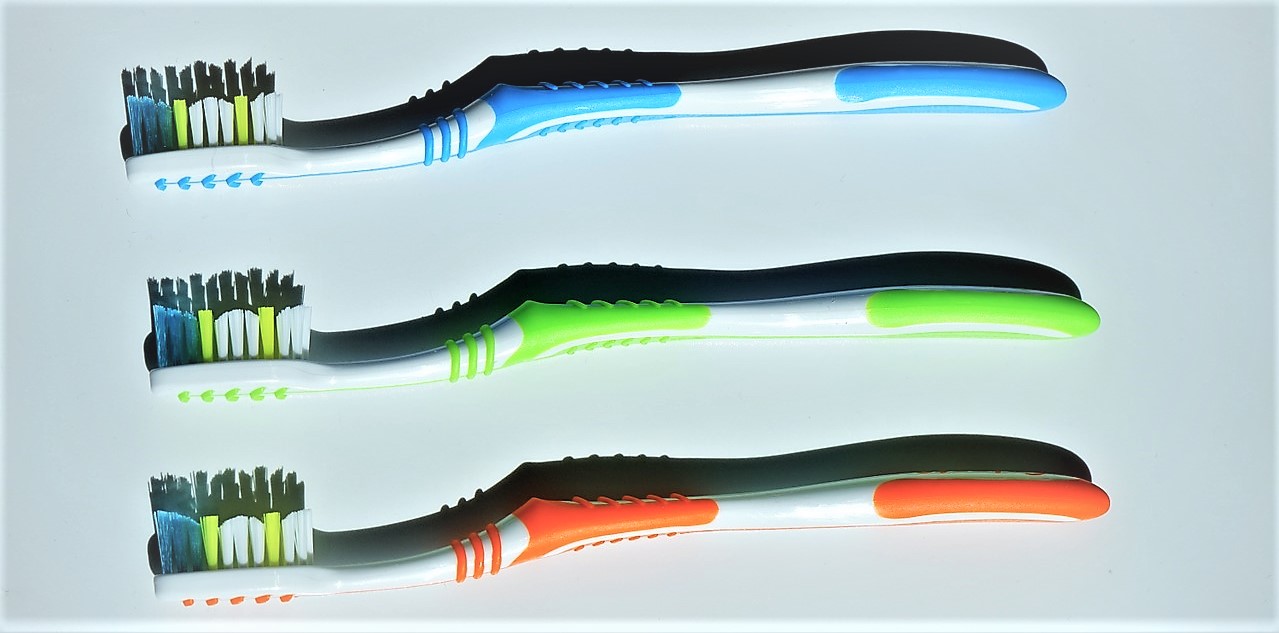
When choosing a toothbrush, various criteria are decisive:
- Price
- manufacturer
- the type of toothbrush
- the hardness of the bristles
- shape of the toothbrush
- size of cleaning head
- cleaning head shape
- colour
- additional enhancements
Price of the toothbrush
We naturally assume that the most expensive product will also be of the highest quality. But this rule does not apply in the case of a toothbrush. At least when choosing a classic toothbrush.
When it comes to electric toothbrushes, the issue is slightly more complex.
The price of the toothbrush is also determined by the shape of the toothbrush and any additional enhancements. Information about the enhancements is given below. And if a high price does not guarantee high quality, then certainly the cheapest toothbrush will not guarantee quality either.
Toothbrush manufacturer
There are many manufacturers, quality is guaranteed by verified brands. A product of an unknown brand may not be the worst. But a verified brand equals verified quality.
Long-standing manufacturers work on quality, improving and sometimes making unnecessary improvements.
They make their products to a certain quality and hold themselves accountable to that quality. They do their own research and testing. Some people have a favourite brand and they can't let go of it.
The type of toothbrush is also important
Manufacturers involved in oral hygiene offer different types of toothbrushes. The classic ones are the most widely used. They offer a variety of variants and designs.
In addition to the classic toothbrush, we also come across the interdental toothbrush.
Interdental brushes also enjoy quite a lot of variation. Their use, however, is essential, namely the perfect cleaning of the teeth from dirt in the interdental spaces. They are a useful aid in the prevention of tooth decay, gingivitis and periodontitis.
Interdental brushes come in different sizes. The interdental spaces themselves are of different sizes. For this case, it is also better if you choose at least two sizes. And this according to the smallest and largest spaces between the teeth.
The interdental toothbrush must fit into the interdental space, it cannot be introduced by force.
Your dentist can also measure the correct size for you. The size and type of interdental toothbrush is crucial to avoid gum injury.
Electric toothbrushes
When choosing from electric toothbrushes, we should know which mechanism we want. In fact, electric toothbrushes are divided into rotary and sonic. Rotary because the movement of the head resembles rotation.
However, the head only rotates from side to side within a certain range.
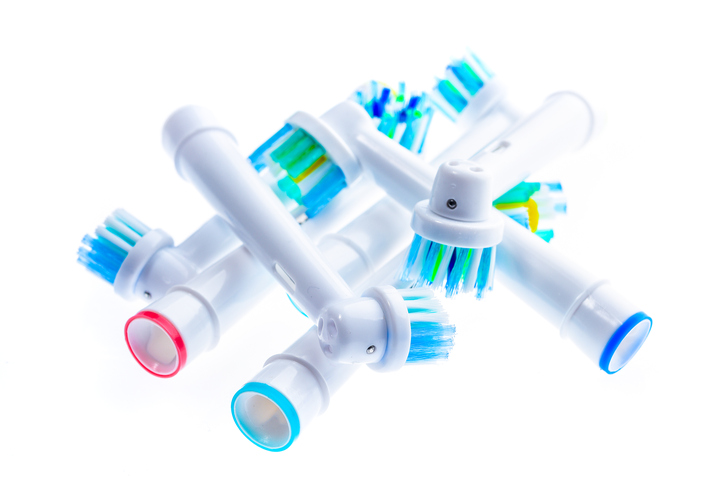
The head of a rotary toothbrush has a circular shape to best adapt to the tooth. It is also a suitable option for cleaning the spaces between the teeth. Several family members can use one toothbrush. This feature is given by the interchangeable heads.
Each member of the family has its own head.
In addition, there are heads that have various additional enhancements. For example, a polishing or massage function. Another convenient feature is that some products offer a sensor for increased pressure during cleaning.
This sensor will alert you to higher brushing pressure that is not suitable for your teeth or gums. Higher pressure of the cleaning brush on the tooth can cause damage to the tooth enamel and also injury to the gums.
Therefore, this feature is welcome.
Sonic toothbrushes, also referred to as ultrasonic toothbrushes, work on a different principle. The principle of rapid vibration ensures gentle cleaning of the teeth and, of course, of hard-to-reach areas. They remove plaque without the need for direct contact.
This ensures that they are really gentle on the teeth and also on the gums.
The rapid vibrations are transmitted to the surroundings via water or saliva. In addition to these vibrations of the surrounding fluids, small bubbles are also created, which also contribute to the cleaning of teeth and harder to reach areas.
It is reported that the effect of a sonic toothbrush is even at a distance of 3 mm from the bristles.

The effectiveness decreases at this distance to approximately 58 %. Nevertheless, their overall effectiveness is high.
Nowadays, sonic toothbrushing is considered to be the most gentle and the most effective.
The advantage of sonic toothbrushes is that they are gentle on the gums.
Which is no longer the case with rotary toothbrushes. With rotary toothbrushes, you need to keep in mind that the rotary technology puts stress on the gums. For this reason, they should not be used by people who have sensitive and diseased or injured gums.
Both rotary and sonic toothbrushes work through electricity. Some are powered with replaceable batteries. But others have a built-in battery. This makes them more water resistant.
Sufficient battery life is guaranteed by the manufacturers' verifications.
Naturally, there is a price to pay for the technology. So, in this category of electric toothbrushes, you have to expect a higher price tag. Rotary toothbrushes are more expensive than conventional toothbrushes. Sonic toothbrushes, on the other hand, are more expensive than rotary toothbrushes.
The cost goes up with the need to replace the heads.
This is at similar intervals to conventional toothbrushes, i.e. every two to three months. However, due to their cleaning efficiency, electric toothbrushes save time and offer a high cleaning rate for this shorter time.
The hardness of the bristles is decisive
The most important thing to notice about a toothbrush is the hardness of its bristles, i.e. the fibres. This characteristic affects the quality of the teeth cleaning.
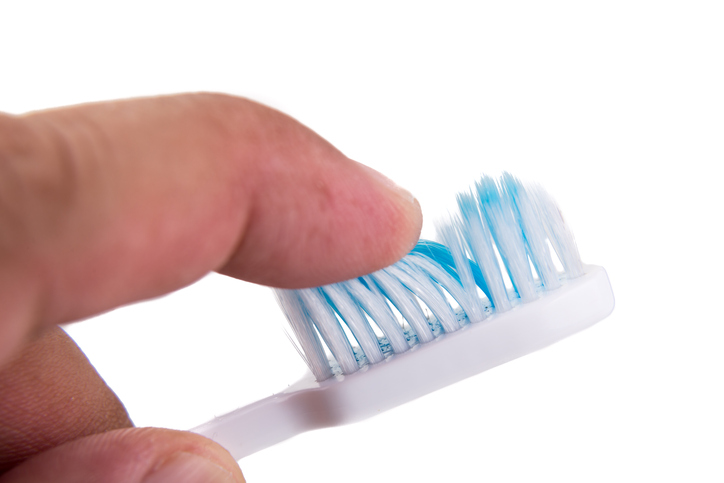
We distinguish between bristles that are:
- hard
- medium hard
- soft and even softer
Some manufacturers offer even softer bristles.
They can be referred to as extra or ultra-fine. And it is these finest brushes that are the best option. Plaque is a soft deposit, so you don't need hard bristles to remove it.
A hard bristle and too much pressure when brushing are the worst combination. The latter can result in increased wear and damage to the tooth enamel and also to the gums. Thus, not only proper brushing technique is related to good oral hygiene.
It is therefore important that the toothbrush is soft. The softest version is the most suitable. When switching from a harder toothbrush, you may of course feel that there is insufficient pressure and therefore insufficient cleaning. This is not true, however.
There is no need for too much pressure when removing plaque.
What should the brush filament be like?
The bristles should be fine, the bristles densely packed. They should be made of artificial fibres that are rounded at the end. These characteristics will guarantee gentle cleaning.
It is important to control the correct, not high pressure of the brush on the teeth.
The difference between natural and artificial fibres is that natural fibres are harder to dry. This encourages the growth of bacteria on their surface. Modern artificial fibres, on the other hand, dry quickly. This is not conducive to the growth of bacteria.
Therefore, it is sufficient if the toothbrush is replaced once every two to three months. Replacement of the toothbrush should also occur naturally after infectious diseases. Even if herpes appears on the lip. This regular replacement interval should also apply to more expensive electric toothbrush handles.
And what if the bristles become frayed?
In this case, it is also best to replace them.
It is normal that if you switch from a hard toothbrush, the bristles of an ultra-fine toothbrush will be destroyed faster. It is this excessive and unnecessary pressure on the tooth surface that causes the toothbrush to fray. Careful handling is better for the toothbrush and also for the teeth or gums.
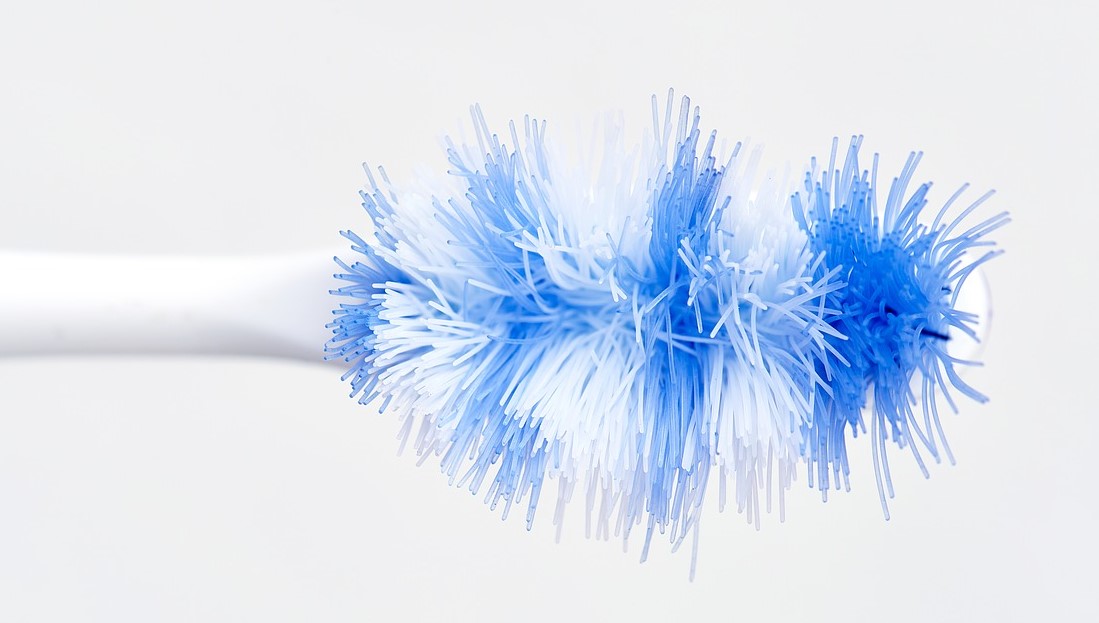
The shape of the toothbrush
Even when it comes to the overall shape of the toothbrush, manufacturers try to impress the client as much as possible. And this is not important for the quality of brushing. They adapt the curvature, which on the other hand can lead to more pressure when brushing the teeth.
The pressure on the teeth needs to be controlled, and at a lower intensity. So even with the overall shape of the toothbrush, a simple shape is sufficient.
The shape of the bristles is much more important.
What shape and size of bristles is satisfactory?
We come across toothbrushes that have been improved with various enhancements. This relates to the shape of the bristles or additional rubber additives. However, these are of little importance in the quality of cleaning.
What is important is that the bristles are of the same size. This ensures even cleaning and pressure distribution on the teeth and gums.
As far as the size of the cleaning head is concerned, smaller ones are preferable.
The smaller size of the toothbrush head will ensure that you can reach the less accessible areas of the molars with the brush. The space in the oral cavity is still limited.
Children's toothbrushes
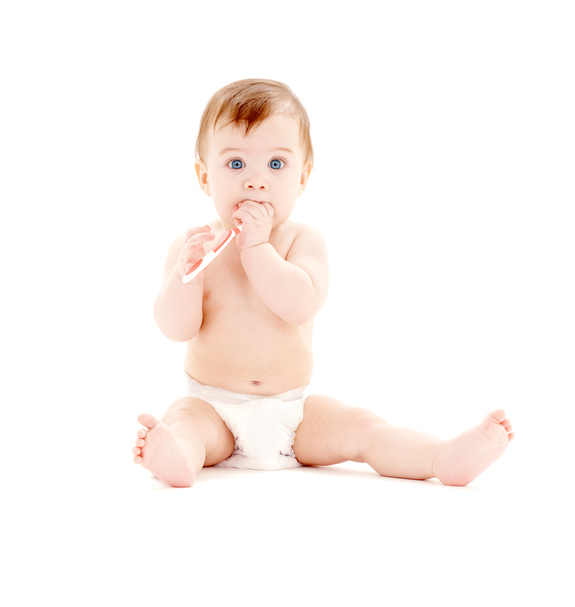
Naturally, children's teeth need to be cared for, even from the first tooth.
The quality of the baby teeth affects the permanent teeth.
In the case of a toothbrush for babies, it is possible to buy a finger handle with bristles.
The toothbrush for babies is made of silicone and fits on the finger.
It is not necessary to use toothpaste until one year of age.
Larger children can brush their teeth on their own. However, it is better if a parent cleans their teeth. Their fine motor skills are not yet trained to brush thoroughly.
Summary
These few tips should help you to choose the most suitable toothbrush for your teeth. To sum up the overall features of the right toothbrush, it is important to keep in mind that a toothbrush should be:
- simple in shape
- with a small head
- soft, ultra-fine bristles are best, dense and rounded
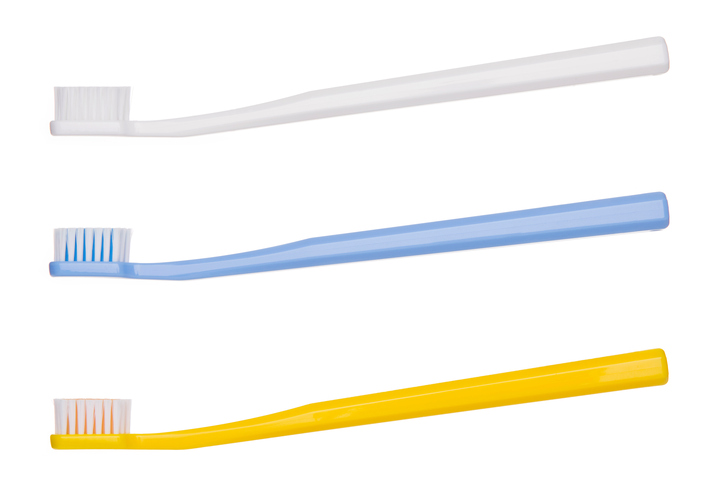
The colour is of course not decisive. The price may be higher if you are willing to pay extra for a proven brand. Additional features are unjustified in the case of classic toothbrushes.
Treat the interdental spaces with a toothbrush or dental floss.
And if you're tempted by the range of electric toothbrushes on offer, you have a choice between a rotary toothbrush and a slightly more expensive sonic (ultrasonic) version. Both are more effective than the classics. Here the rule is: the more expensive option is better, choose a sonic toothbrush.
Ako si správne čistiť zuby?
Interesting resources
Related










